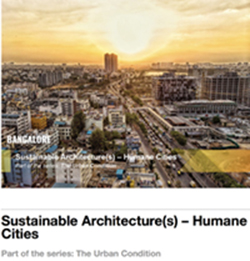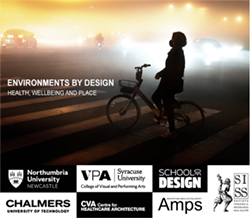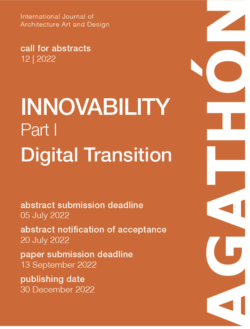ISSN (online): 1996-1073
Call of the Journal:
- A Holistic Overview of the Energy Sector | From Engineering Approaches to Innovative ML Solutions
- Active Power Filters and Power Quality
- Advanced Electric Vehicle Techniques
- Advanced Environmental Controls for High-Performance Buildings and Sustainability
- Advanced Solutions to Increase Resilience of Medium Voltage Distribution Networks
- Advanced Techniques to Increase Energy Efficiency by Optimization and Improving Power Quality
- Advances in Catalytic Technologies for Biodiesel Fuel Synthesis
- Advances in Fluid Power Systems
- Advances in Materials, Technologies and Controls for Sustainable Buildings
- Advances in Modelling for Nuclear Science and Engineering
- Big Data on Energy, Climate Change and Sustainability
- Building Sustainable Cities of the Future
- Community Microgrids
- Computational Modelling of Wave Energy Converters
- Condensation Heat Transfer
- Control of Wind Turbines
- COVID-19 Pandemics | Energy, Economic, Environmental, Social, Policy and Health Impacts
- Decarbonising Heating and Cooling
- Design and Application of Electrical Machines
- Design and Application of Innovation Catalysts for Hydrogenation
- Drilling Technologies for the Next Generations
- Dynamic Modelling and Control in Multilevel Converters
- Economic and Policy Challenges of the Energy Transition in CEE Countries
- Economic Growth and Environmental Degradation in the Paradigm of Energy Transition
- Electric Power Transmission | Active Subtransmission Networks
- Electric Vehicle Charging Networks
- Electrified Powertrains for a Sustainable Mobility | Topologies, Design and Integrated Energy Management Strategies
- Electrothermal Modeling of Solar Cells and Modules
- Embedded Discrete Fracture Model (EDFM) for Advanced Naturally and Hydraulically Fractured Reservoir Simulation
- Emerging Materials and Fabrication Methods for Solid Oxide Fuel Cells (SOFCs)
- Emerging Technologies for the Efficient Utilization of Coal and Biomass
- Energy and Environmental Sustainability 2020
- Energy Conversion and Operation Technologies for Smart Grid
- Energy Data Visualization
- Energy Flows and Synergies between Energy Networks
- Energy Management in the Multi-Source Systems
- Energy Transition and Social Innovation
- Environmental and Sustainable Built Environments
- Estimation of the State-of-Charge and State-of-Health of Lithium-Ion Batteries
- European Energy Policy at a Crossroads
- Future Electrical Machines
- Governance Strategies and Insights to Accelerate the Production and Diffusion of Hydrogen and Fuel-Cell Technologies
- Green Building Technologies 2020
- Heat and Mass Transfer in Multi-Phase Flows
- Heating, Cooling, and Ventilation Systems | Applications and Performance
- Improving Energy Efficiency through Data-Driven Modeling, Simulation and Optimization
- Integration of Electrical Vehicles and Renewable Energy Resources into Power Distribution Networks
- Interactive Integration of Electric Vehicles and Power Networks | Emerging Issues and Solutions
- Life Cycle Assessment of Environmental System
- Lifetime Extension of Wind Turbines and Wind Farms
- Machine-Learning Methods for Complex Flows
- Mechanical Industrial Plants for Solid Waste Treatment
- Modeling and Control of Hybrid Electric Vehicles
- Modelling of Multiphase Flows for Renewable Energy
- Multilevel Power Converters Control and Modulation Techniques
- Nanotechnology for Solar Energy Conversion
- Next Generation of Dye-Sensitized Solar Cells
- Novel Developments in Energy Resources Management, Distribution Systems, Microgrids and Energy Communities
- Numerical Simulation of Wind Turbine
- Optimal Design of Power Converters
- Optimization of Propulsion in Transport Means
- Organic Photovoltaics and Organic Transistors
- Performance and Reliability of Wide Bandgap Semiconductor and Nano Device-Based Circuits for Energy Systems
- Perovskite Solar Cells
- Photovoltaic Devices
- Protection and Communication Techniques in Modern Power Systems
- Protection of Future Multi-Terminal HVDC Grids
- Proton-Exchange Membrane Fuel Cells
- Real-Time Monitoring and Control for Wind Turbine Systems
- Recent Progress in Metal-Organic Frameworks for Energy-Related Applications
- Recent Studies in District Heating and Cooling Systems
- Research on Wireless Power Transfer System
- Sector Coupling for Sustainable Urban and Regional Energy Systems
- Selected Papers from the “20th CIRIAF National Congress | Sustainable Development and Preservation of Environment and Human Health”
- Smart Built Environment for Health and Comfort with Energy Efficiency
- Smart Technologies, Management and Control for Energy Systems and Networks
- Smart Thermostats for Energy Saving in Buildings
- Storages and Power Plant Flexibility for Improving Renewable Energy Penetration
- Systemic Issues to Wind and Solar Energy Deployment
- Technologies Conducive to Low Green House Gas Emission
- Thermal Management and Experimental Techniques for a Sustainable Mobility
- Thermal Storage Technologies
- Waste-to-Energy Technology Integrated with Carbon Capture
Jan
2021
Feb
2021
Multi-Terminal HVDC (MT-HVDC) grids are expected to play a key role in future electricity delivery systems. The main drivers for the development of MT-HVDC grids are the large-scale integration of renewable energy resources, particularly off-shore wind farms, and the promotion of international energy markets through the concept of super-grids. The voltage source converter (VSC) technology, practically implemented as modular multilevel converters (MMCs) based on half-bridge or full bridge submodules, enables the realization of MT-HVDC grids by offering flexibility to change the power flow direction and the possibility of connecting to weak AC systems. This Special Issue covers both MT-HVDC grids comprising more than two terminals and meshed DC paths and MT-HVDC systems comprising more than two terminals but no meshed DC paths. There are a few MMC based MT-HVDC systems in operation while the world’s first large-scale MT-HVDC grid, the Zhangbei four-terminal HVDC grid in China, is expected to be operational in 2022. The protection of MT-HVDC grids is of utmost important to ensure the safety of equipment, preserve the stability of the AC grids they are connected to, and attain the full reliability benefits of MT-HVDC grids. The protection should prevent faults in an AC system that result in the loss of generation or load in a MT-HVDC grid, impacting the other AC systems via the MT-HVDC grid. Similarly, a fault inside a converter station should not result in complete shutdown of a MT-HVDC grid. The faults on the DC side lines, cables, or busbars are the most challenging, as all converters contribute to the fault current, causing a sudden reduction in the voltage of DC buses, severely restricting the power flow, and risking the shutdown of the entire HVDC grid. DC side fault currents can rise very rapidly, peaking well above the steady state fault current due to discharge of converter capacitance and stored energy in inductive and capacitive elements in the fault current paths. A DC side fault is reflected on the AC side as a three-phase short circuit, and a MMC based on half-bridge submodules is unable to block the steady state fault current contribution from the AC side. On the other hand, limitations of the DC circuit breaker technology, both technical and economic, make the problem even more challenging. Therefore, the protection of MT-HVDC grids has recently become a subject of intense research. This Special Issue of Energies aims to discuss the challenges and solutions to the problem of the protection of future MT-HVDC grids.
The topics of interest include, but are not limited to: Fault detection and discrimination techniques for MT-HVDC grids;Identification of faults inside converter stations;Developments in DC circuit breaker technology and practical testing;Fast and sensitive protection techniques for submarine cables and mixed transmission system with both cables and overheadlines;Impacts of different grid configurations and grounding schemes on fault discrimination and protection;Fault current limiters and their impacts on the protection of MT-HVDC grids;Impact of fault tolerant converters on the protection of MT-HVDC grids;Co-ordinating strategies for fault handling;Temporary fault clearing strategies;Methodologies for specifying MT-HVDC grid protection requirements and testing;Analytical models for fault current characterization and fault location.
Protection of Future Multi-Terminal HVDC Grids
Multi-Terminal HVDC (MT-HVDC) grids are expected to play a key role in future electricity delivery systems. The main drivers for the development of MT-HVDC grids are the large-scale integration of renewable energy resources, particularly off-shore wind farms, and the promotion of international energy markets through the concept of super-grids. The voltage source converter (VSC) technology, practically implemented as modular multilevel converters (MMCs) based on half-bridge or full bridge submodules, enables the realization of MT-HVDC grids by offering flexibility to change the power flow direction and the possibility of connecting to weak AC systems. This Special Issue covers both MT-HVDC grids comprising more than two terminals and meshed DC paths and MT-HVDC systems comprising more than two terminals but no meshed DC paths. There are a few MMC based MT-HVDC systems in operation while the world’s first large-scale MT-HVDC grid, the Zhangbei four-terminal HVDC grid in China, is expected to be operational in 2022. The protection of MT-HVDC grids is of utmost important to ensure the safety of equipment, preserve the stability of the AC grids they are connected to, and attain the full reliability benefits of MT-HVDC grids. The protection should prevent faults in an AC system that result in the loss of generation or load in a MT-HVDC grid, impacting the other AC systems via the MT-HVDC grid. Similarly, a fault inside a converter station should not result in complete shutdown of a MT-HVDC grid. The faults on the DC side lines, cables, or busbars are the most challenging, as all converters contribute to the fault current, causing a sudden reduction in the voltage of DC buses, severely restricting the power flow, and risking the shutdown of the entire HVDC grid. DC side fault currents can rise very rapidly, peaking well above the steady state fault current due to discharge of converter capacitance and stored energy in inductive and capacitive elements in the fault current paths. A DC side fault is reflected on the AC side as a three-phase short circuit, and a MMC based on half-bridge submodules is unable to block the steady state fault current contribution from the AC side. On the other hand, limitations of the DC circuit breaker technology, both technical and economic, make the problem even more challenging. Therefore, the protection of MT-HVDC grids has recently become a subject of intense research. This Special Issue of Energies aims to discuss the challenges and solutions to the problem of the protection of future MT-HVDC grids.
The topics of interest include, but are not limited to: Fault detection and discrimination techniques for MT-HVDC grids;Identification of faults inside converter stations;Developments in DC circuit breaker technology and practical testing;Fast and sensitive protection techniques for submarine cables and mixed transmission system with both cables and overheadlines;Impacts of different grid configurations and grounding schemes on fault discrimination and protection;Fault current limiters and their impacts on the protection of MT-HVDC grids;Impact of fault tolerant converters on the protection of MT-HVDC grids;Co-ordinating strategies for fault handling;Temporary fault clearing strategies;Methodologies for specifying MT-HVDC grid protection requirements and testing;Analytical models for fault current characterization and fault location.
AGORA (FAO), AGRIS (FAO), CAB Abstracts (CABI), Chemical Abstracts (ACS), Current Contents – Engineering, Computing & Technology (Clarivate Analytics), DOAJ, EconPapers (RePEc), Ei Compendex / Engineering Village (Elsevier), ETDE (IEA), Genamics JournalSeek, HINARI (WHO), IDEAS (RePEc), Inspec (IET), Journal Citation Reports / Science Edition (Clarivate Analytics), Julkaisufoorumi Publication Forum (Federation of Finnish Learned Societies), LAPSE, Norwegian Register for Scientific Journals, Series and Publishers (NSD), RePEc, Science Citation Index Expanded – Web of Science (Clarivate Analytics), Scopus (Elsevier), Web of Science (Clarivate Analytics), CLOCKSS (Digital Archive), e-Helvetica (Swiss National Library Digital Archive), Academic OneFile (Gale/Cengage Learning), EBSCOhost (EBSCO Publishing), Energy & Power Source (EBSCO), Engineering Source (EBSCO), Google Scholar, J-Gate (Informatics India), Materials Science & Engineering (ProQuest), ProQuest Central (ProQuest), Science In Context (Gale/Cengage Learning), WorldCat (OCLC).
Info at: www.mdpi.com/journal/energies/apc
Guest Editor
Prof. Dr. Athula D. Rajapakse










